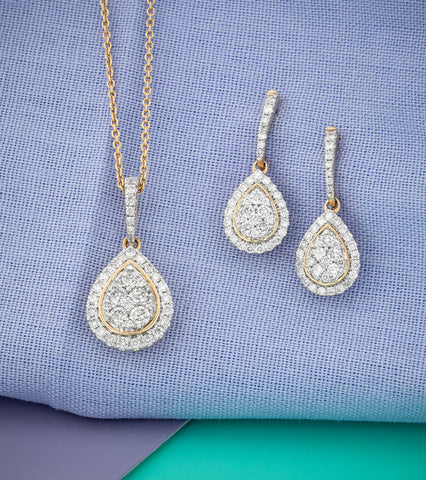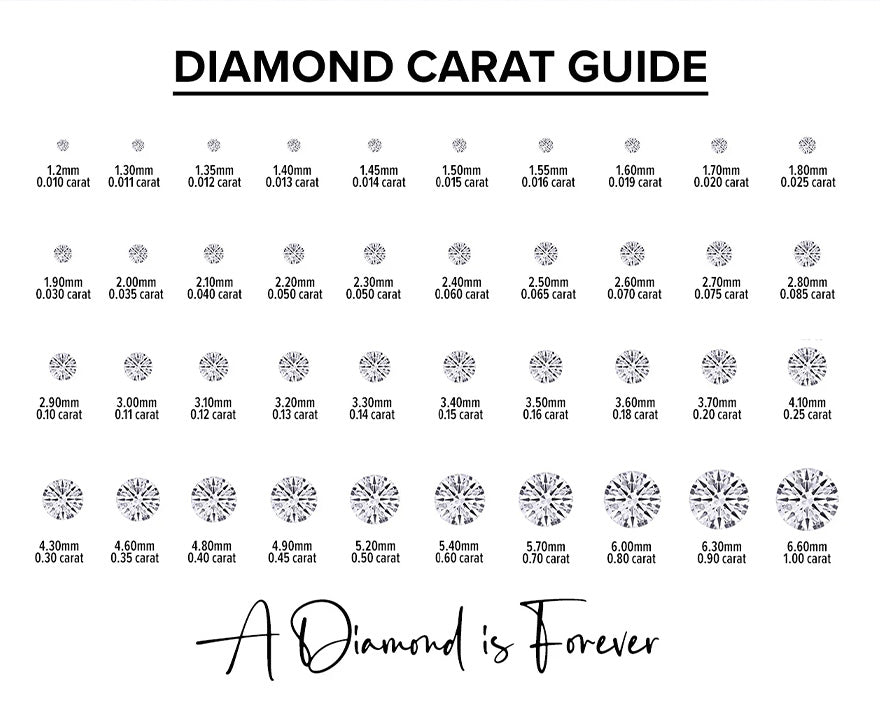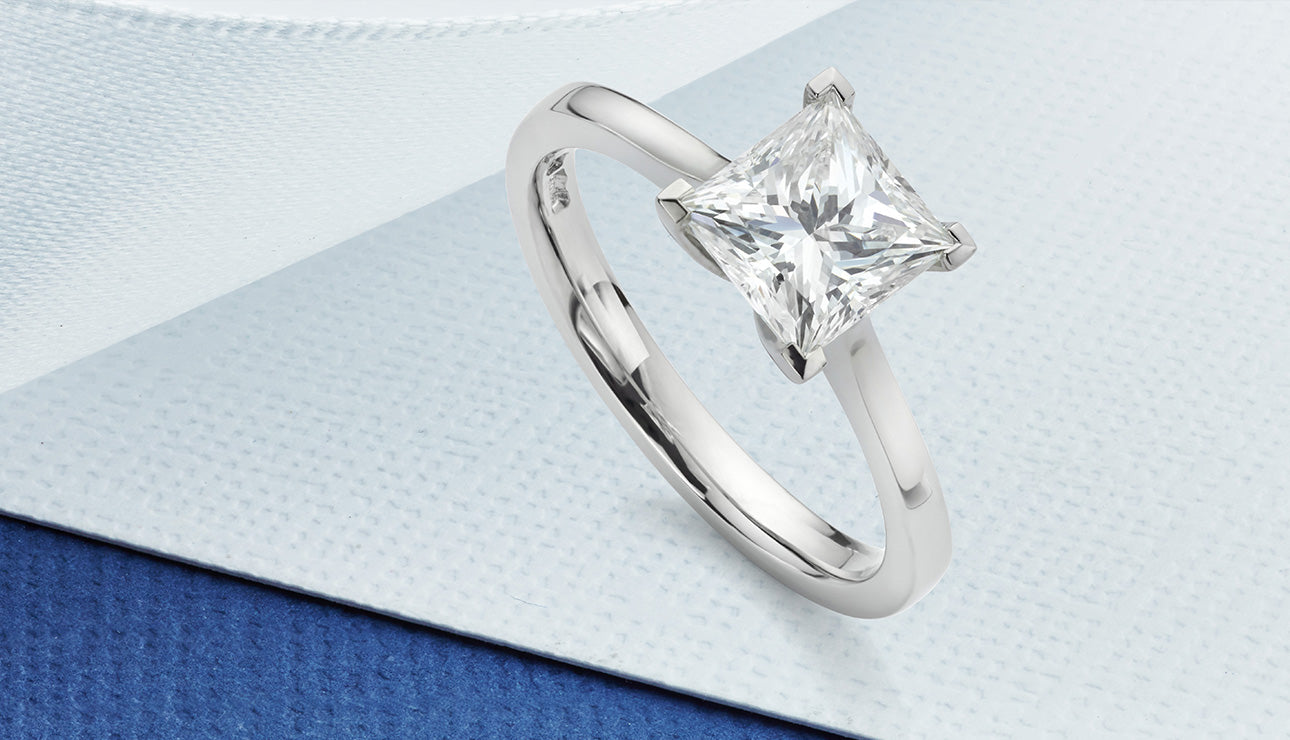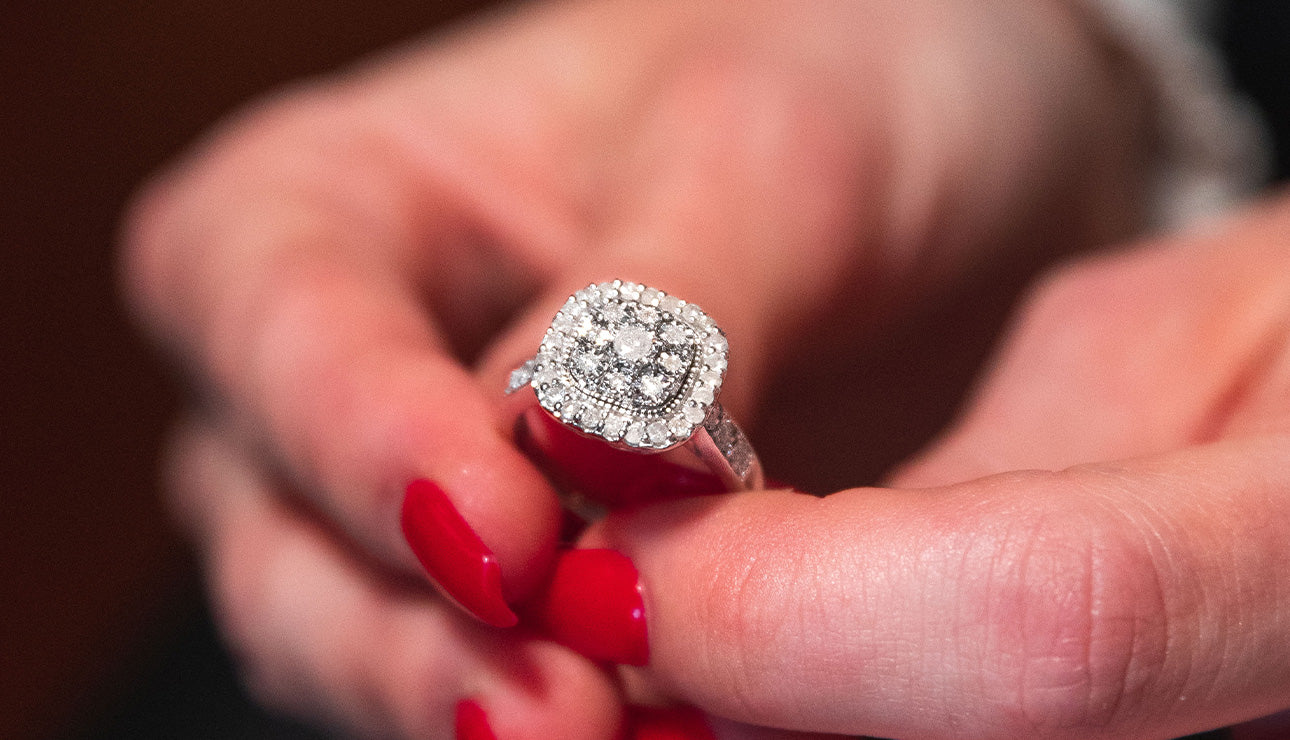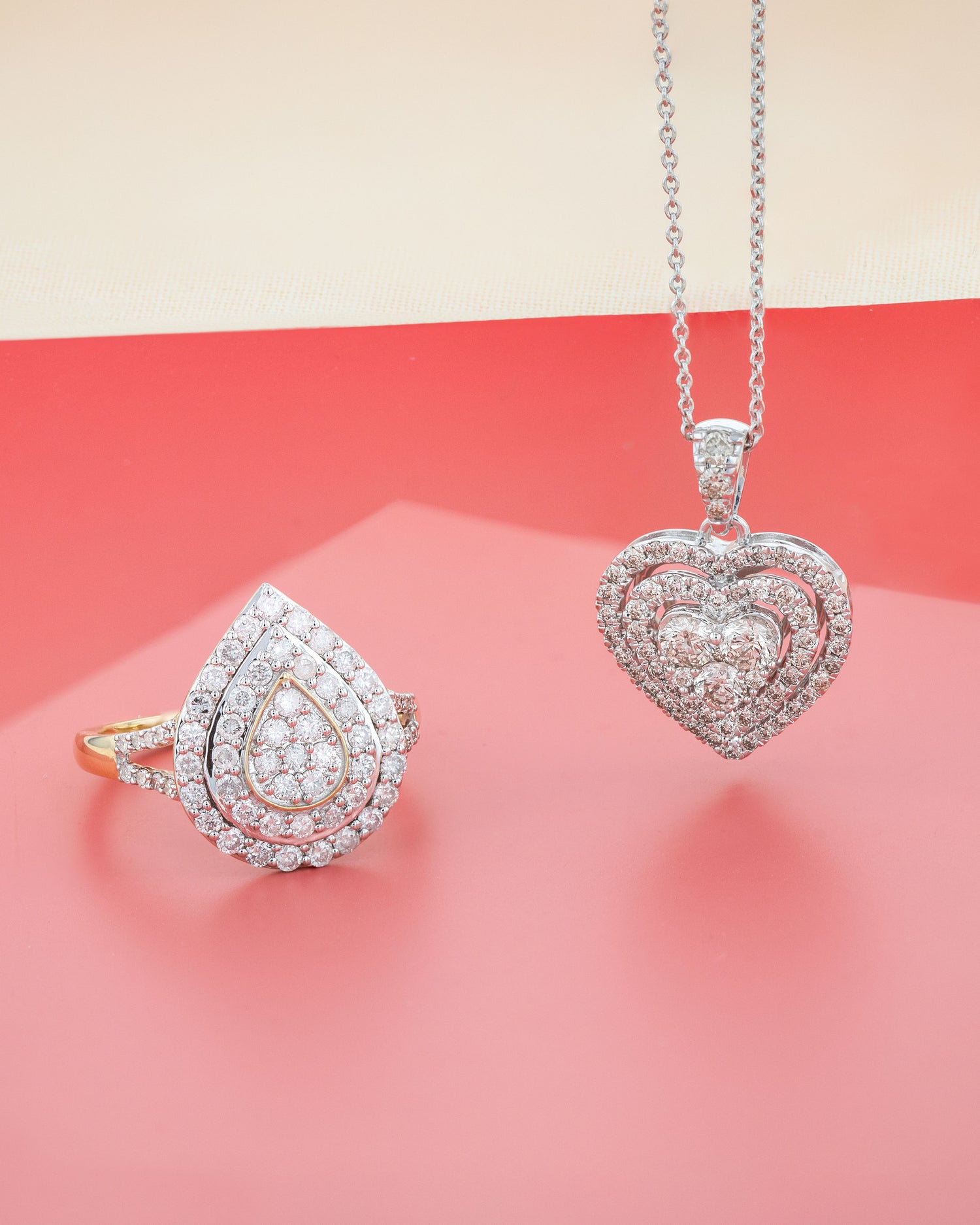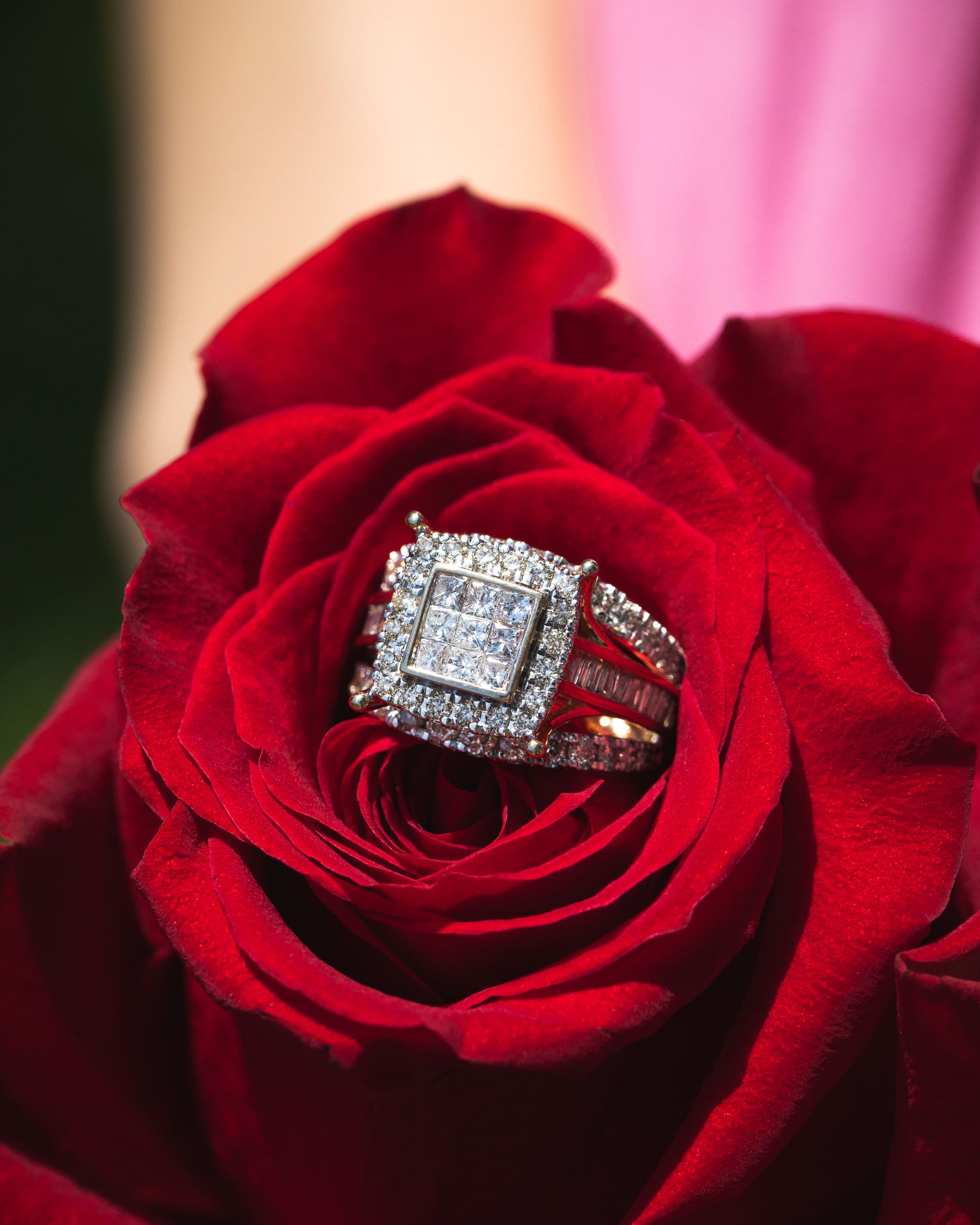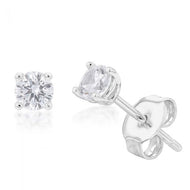Diamond Carat Guide
How Important Is Diamond Carat When Purchasing Jewellery?
Whether you’re shopping for engagement rings or a new pair of diamond earrings to add to your collection, carat size is likely the first thing you are going to consider. This is because a diamond’s carat size directly affects the overall value and appearance of the stone. While a diamond carat size doesn’t necessarily impact the stone’s quality as much as the other three Cs, colour, cut, and clarity. Establishing your preferred carat size is an essential part of making diamond purchases as it informs what is and isn’t in your budget. Your choice of a budget is essentially the unofficial fifth C to consider and it is arguably the most crucial first step before you even go looking at stones because it has the potential to become the be-all-end-all of your diamond-buying experience. Nothing brings up a diamond’s price quite like its size and so it is helpful to have a decent understanding of the type of stones that fit within your budget before pulling the trigger.
While carat size is ultimately a personal and financial preference, for a lot of people it is the defining feature of their jewellery. Particularly, when it comes to diamond rings and bridal sets, which often draw more attention to a stone’s size and shape. This means that while some tend to emphasise the other physical factors that go into buying a diamond such as the stone’s colour, its shape and how much it sparkles, others are very hard-pressed on what size the stone should be. As a result, it may motivate not only the quality of the diamond they end up choosing but also the type of stone they purchase. For example, a lot of shoppers are opting for jewellery adorned with lab-grown diamonds because they are significantly more affordable than their minded counterparts. So, by going down the lab-grown diamond jewellery route, shoppers not only have the potential to save big and slightly better-quality stones, but they also have more leeway in terms of carat size.
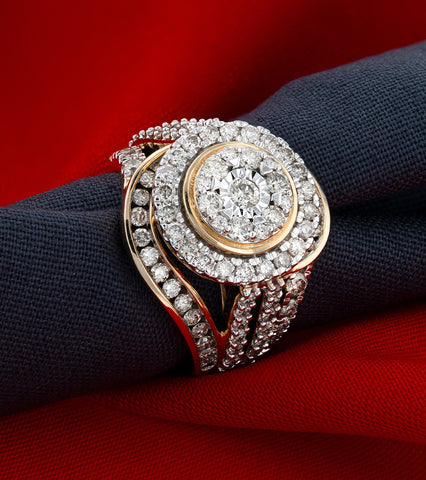
How Is Diamond Carat Size Determined?
A diamond’s carat size is determined by its weight. However, instead of being measured by grams, kilograms, pounds, stones or any other popular measuring unit, a diamond’s size is literally determined in carats.
So, what are carats exactly?
Carat is an ancient unit metric that was once used by farmers in order to determine the number of seeds that could be found in a single carob tree. Dating back to 15th-century England, one carat is equal to 0.2 grams and the exact carat weight is determined by dividing a single carat into 100 points. To determine the carat weight of a diamond, the gemologist will place the stone onto a precision scale that is accurate to the thousandth of the carat, an essential element in order to be able to determine the stone’s exact mass. After a diamond is mined or in the case of man-made stones, produced in a laboratory, the rough diamond will undergo a process of sorting and evaluating in order to determine which diamond cut will provide the stone with the best value. When cutting a diamond, it is in the best interests of a gemologist to cut it in a way that maximises the stone’s weight while enhancing its brilliance, fire, and scintillation.
The cutter will take into account the diamond's shape, colour, and inclusions when deciding how to cut it in order to achieve the best possible result.
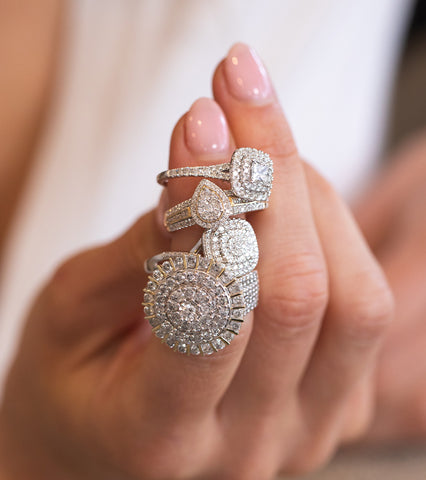
What is an ideal diamond carat size?
Even though people put a lot of emphasise on carat size, particularly when it comes to accessories when your diamond is the centrepiece such as engagement rings and diamond necklaces, there really is no ‘ideal’ carat size. The ideal diamond carat size is ultimately down to personal preference and of course, what kind of stones are in your budget. It's important to remember that carat size isn't the only factor that will affect a diamond's appearance and value. And while there has always been an emphasis on ‘the bigger, the better’, that isn’t always the case. Some people prefer diamonds that are under a carat because they fit in better with their lifestyle. For example, those with small hands and shorter fingers may be conscious of getting a stone that is too big in the event that it doesn’t flatter them. Those who work with their hands may also prefer a smaller stone because it is less likely to get caught on objects such as items of clothing. Contrastingly, those who are eager to make a bold statement with their jewellery may opt for a larger stone in hope that it has a better chance of catching people’s eye with its epic size and radiant sparkle.
While the average carat size for bridal jewellery can vary significantly based on several factors including geographic location, cultural beliefs and backgrounds along with personal preference. A recent survey conducted by The Knot suggests that the average size for engagement rings lingers around the 1-carat mark. However, it’s worth noting that while rings between 1.08 and 1.2 carats are the benchmark for rings used for popping the question, our tastes in engagement rings have also shifted significantly in recent years. This may or may not have unconsciously altered our carat size preferences too. In the late noughties and early 2010s, bulky and more elaborately designed rings often adorned with halo settings dominated the wedding zeitgeist. Now, as we tread into the mid-2020s, our tastes feel somewhat more subdued and minimalist. More brides and even grooms are opting for daintier styles with smaller stones or a single large centre on a thin, finely polished band.
